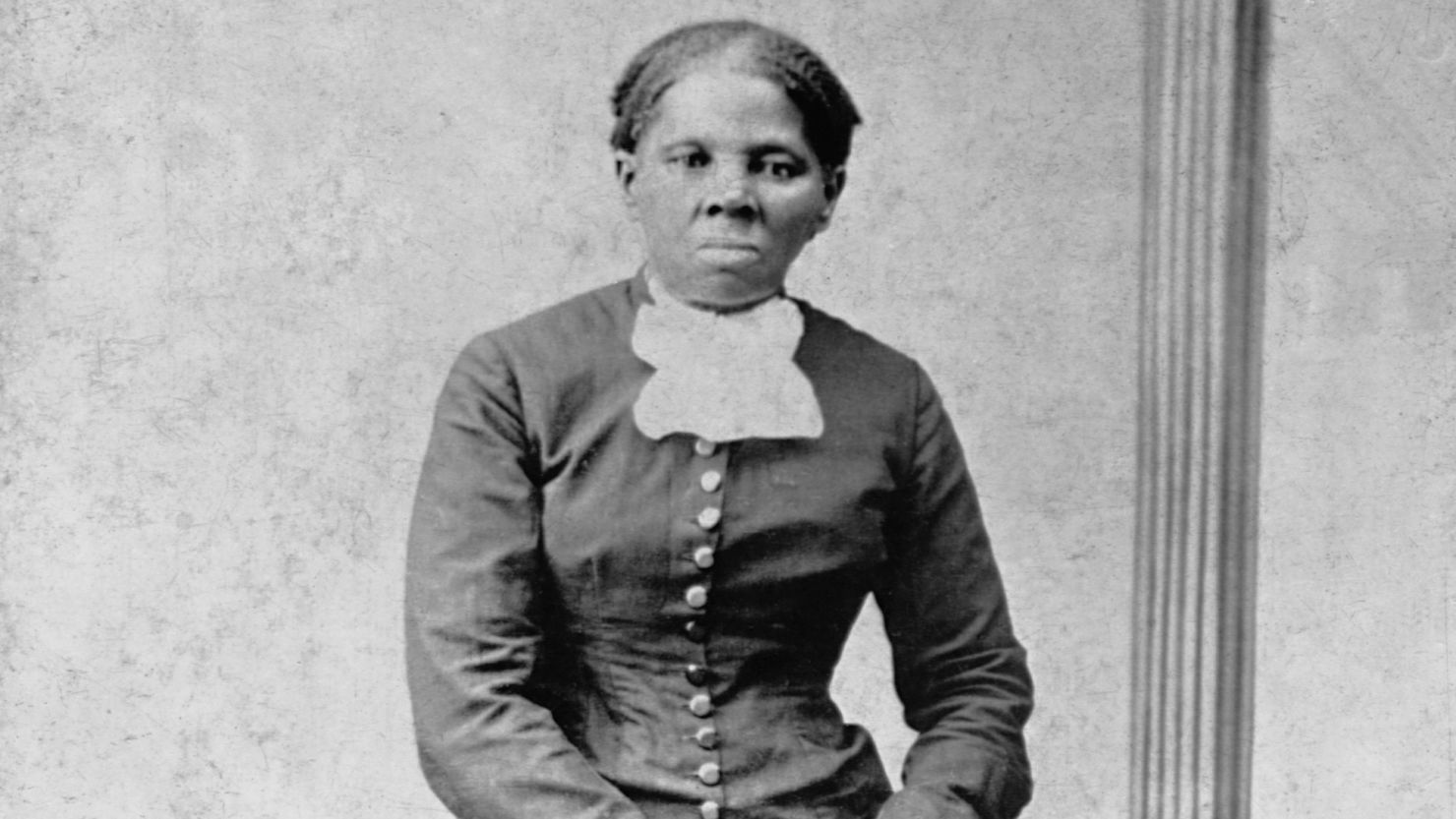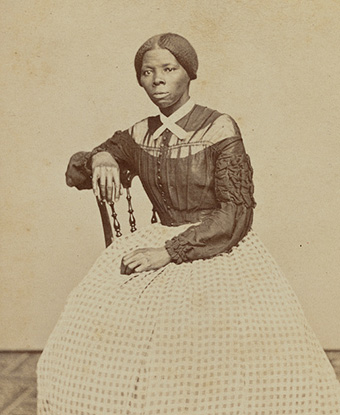Harriet Tubman

Harriet Tubman, determined and fearless
Biography
Before she was Harriet Tubman, she was Araminta 'Minty' Ross—born into slavery in 1822 in Dorchester County, Maryland. Her body was small but strong, and her spirit even stronger. From the time she was a child, she was hired out to other households, working grueling hours far from her family and experiencing the brutal violence of slavery firsthand. At age 13, she took a blow to the head while defending another enslaved person, an injury that left her with permanent neurological symptoms likely narcolepsy. But rather than slow her down, that injury became part of her story. Her 'sleeping spells' brought her vivid dreams and visions, ones that guided her toward freedom and toward becoming a liberator herself.
In 1849, fearing she would be sold again, Harriet took her first step toward freedom, walking nearly 100 miles to Pennsylvania with nothing but courage and the stars above to guide her. But her freedom wasn’t enough. True liberation, for her, was collective. Over the next decade, she returned to the South around 13 times, risking her life to lead approximately 70 enslaved people to freedom through the Underground Railroad. She became known as 'Moses' for her ability to guide others through the 'wilderness' of slavery to the promised land of freedom. And she meant it when she said, 'I never lost a passenger.'
Tubman wasn’t just a conductor, she was also a spy, a nurse, and the first woman in U.S. history to lead a military raid. During the Civil War, she helped organize and execute the Combahee River Raid, which freed more than 700 enslaved people in South Carolina. She used her knowledge of the land and her deep network of informants to aid the Union cause, proving again that liberation takes intelligence, boldness, and relentless willpower. She was a freedom fighter, strategist, and community organizer rolled into one unstoppable force.
Even after the war ended, Tubman kept fighting. She settled in Auburn, New York, where she cared for formerly enslaved people and founded the Harriet Tubman Home for the Aged. She became active in the women's suffrage movement and worked alongside icons like Susan B. Anthony and Lucretia Mott. Tubman lived a life of service, feeding the hungry, housing the unhoused, and caring for the sick long after the spotlight faded. Her second husband, Nelson Davis, and adopted daughter Gertie were part of the chosen family she built in freedom.
Harriet Tubman died in 1913 at the age of 91. Her final words were, 'I go to prepare a place for you,' and even in death, that feels true. She paved the way not only for the people she freed in her lifetime, but for every generation fighting for justice today. Tubman was many things: disabled, devout, defiant, and deeply determined. She reminds us that liberation isn’t a solo act, it’s a movement. And it starts with one person refusing to accept the world as it is.
Tubman shows that freedom isn’t a solo act—it’s a relay. She didn’t stop after crossing the Mason‑Dixon Line; she went back again and again, proving that liberation means bringing others with you. Her legacy connects racial justice, disability advocacy, veterans’ service, and women’s rights into one powerful blueprint for collective change.
?
How did Tubman’s knowledge of nature and secret networks turn geography into a tool for freedom?
In what ways did her head injury and narcolepsy shape both her challenges and her vision?
Why did Tubman risk returning to slave‑holding states instead of staying safe in the North or Canada?
How did Tubman’s Civil War service expand the fight against slavery beyond the Underground Railroad?
What parallels exist between Tubman’s activism for women’s suffrage and modern voting‑rights movements?
If Tubman were alive today, what causes do you think she would tackle first—and how?
Dig Deeper
Take a closer look at the life of escaped slave and American icon Harriet Tubman, who liberated over 700 enslaved people using the Underground Railroad.
Harriet Tubman, a tiny woman who could neither read nor write, pulled off superheroine-like exploits in the years before the Civil War. With the help of the Underground Railroad, she not only escaped from a Maryland plantation to freedom in the North, she went back, 13 times over 10 years, to guide more than 70 enslaved people to freedom.
Discover more

Louisa May Alcott
A feminist, abolitionist, and fierce advocate for women's rights, Louisa May Alcott turned her personal struggles into public triumphs, creating characters that dared to live, speak, and choose freely.

Helen Keller
Helen Keller overcame the isolation of being both deaf and blind to become a world-renowned author, speaker, and advocate for disability rights, women’s suffrage, labor rights, and social justice.

Fannie Lou Hamer
Fannie Lou Hamer turned her pain into power, becoming the thunderous voice of the Mississippi Freedom Democratic Party, a driving force behind Freedom Summer, and a national symbol of the fight for voting rights.
Further Reading
Stay curious!
